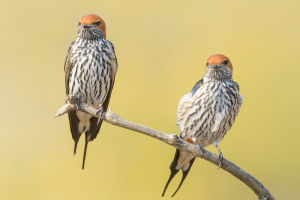White-Bellied Woodstar Facts
The White-Bellied Woodstar (Chaetocercus mulsant) is one of the most fascinating hummingbirds in South America. Despite its small size, this bird stands out in the wild with dazzling plumage and impressive aerial skills.
Native to the Andean regions, it enchants birdwatchers and nature enthusiasts with its vibrant colors and captivating behaviors.
A Small but Stunning Presence
Measuring just about 6 to 7 centimeters in length, the White-Bellied Woodstar is a diminutive bird that can be easily overlooked—if not for its brilliant coloration. The males are particularly striking, showcasing iridescent purple and green feathers that catch the light and shimmer like precious jewels. The white patch on the lower belly, for which the species is named, contrasts sharply with its dark upper body, making it a spectacular sight when in flight. Females are more modestly colored, with greenish backs and lighter underparts, but are still charming in their own right.
Habitat and Range
These tiny hummingbirds are primarily found in the cloud forests of the Andes, spanning countries like Colombia, Ecuador, and Peru. They prefer elevations ranging from 1,200 to 3,000 meters, where the cool mountain air and dense vegetation create an ideal environment. The wide variety of flowering plants in these forests provides the perfect setting for the White-Bellied Woodstar to thrive, as they feed on nectar and play a critical role in pollination.
Feeding and Pollination
The White-Bellied Woodstar is a nectar specialist, using its slender bill and long, extendable tongue to extract nectar from tubular flowers. The rapid beating of their wings—up to 80 times per second—allows them to hover effortlessly as they feed. In addition to nectar, they consume small insects and spiders, providing a source of protein crucial for their high-energy lifestyle. As these birds flit from flower to flower, they inadvertently transfer pollen, making them essential pollinators for the local ecosystem.
Remarkable Flight and Courtship Displays
One of the most captivating aspects of the White-Bellied Woodstar is its aerial acrobatics. These hummingbirds are incredibly agile, capable of making sudden turns and hovering mid-air with extraordinary precision. During the mating season, males put on dramatic displays to attract females, performing rapid dives and showing off their iridescent plumage. The courtship dance is a breathtaking spectacle, showcasing the male’s agility and vibrant colors in a mesmerizing performance.
Conservation Status and Challenges
Currently, the White-Bellied Woodstar is listed as "Least Concern" by the International Union for Conservation of Nature (IUCN). However, habitat loss due to deforestation and climate change poses a growing threat. Conservation efforts are essential to ensure the protection of the Andean cloud forests and the many species, including this tiny hummingbird, that call them home.
Lykkers, the White-Bellied Woodstar may be small, but its impact on the ecosystem and its beauty are undeniably significant. These birds remind us of the rich biodiversity hidden in the Andes and the importance of preserving these habitats. Spotting one of these radiant creatures in the wild is a delightful experience, a true testament to nature’s intricate artistry.
White-bellied Redstart facts
Video by Amazing Planet!


